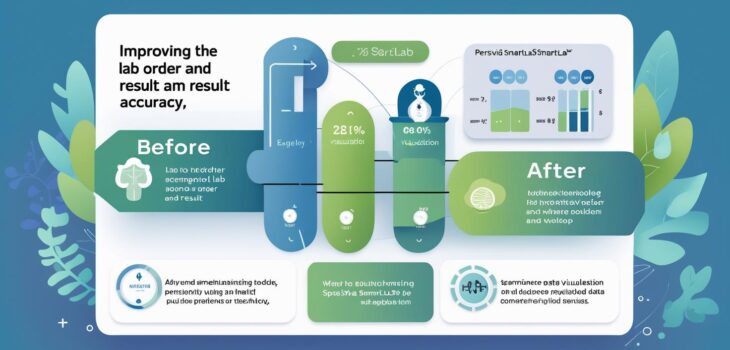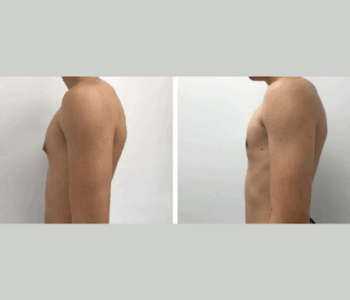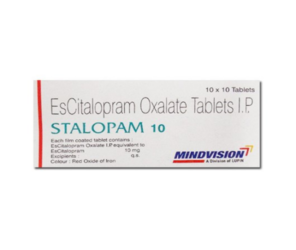 Health
Health
Rethinking ETOR: Fixing the Gaps in Lab Orders and…
Diagnostic testing ought to be easy. It should go smoothly. However, it isn’t. The processes of healthcare practitioners in various situations are fragmented. Orders disappear. The results are delayed. Providers manage out-of-date EMRs, portals, spreadsheets, and fax machines. All of this strains frontline teams who are already working at capacity, delays care choices, and affects outcomes.
Persivia SmartLab™ starts to matter at this point. It is not simply another tool for lab interfaces. By integrating diverse systems into a unified ecosystem for test ordering and outcome reporting, it addresses the actual, underlying problems. And it accomplishes this in urgent care facilities, ambulatory clinics, hospitals, and even unaffiliated laboratories and systems.
The Actual Issues with Test Results and Orders
The majority of technologies overlook the numerous friction points present in clinical workflows. These are a few of the most excruciating:
- Errors with manual entry: Incorrect patient. Incorrect order. Incorrect exam. Too many clicks.
- Orders that are missing: Orders sent by email or fax are never processed or acknowledged.
- Results that are delayed: Results that were either not incorporated into the EHR or sent days later.
- Unusual codes: Labs that may not accept the proprietary codes in your EMR.
- Tracking issues: No audit trail. I have no idea if the lab received the order or where it is stalled.
How to Create a Uniform ETOR Workflow
By integrating lab orders and results into current clinical processes, a real Electronic Test Orders and Results (ETOR) system alters this. However, it must do more than digitize. It must:
- Streamline disparate lab codes
- Connect test findings to certain care paths.
- When findings surpass specific levels, alert care personnel.
- Real-time record updates
- Preserve data integrity between systems.
SmartLab™ does all of this by fully automating the ETOR procedure. It appears as follows at each stage:
| Workflow Step | Without Persivia SmartLab™ | With Persivia SmartLab™ |
| Test Order | Manual entry, faxes, external portals | One-click order directly from the workflow |
| Transmission | Error-prone, disconnected systems | Standards-based, automated HL7/FHIR messaging |
| Lab Code Mapping | Manual or not done | Automatic normalization and code translation |
| Result Receipt | Delayed, non-integrated | Instant notification + embedded result review |
| Follow-Up | Often missed or delayed | Triggered alerts and task assignments |
HL7 Is Insufficient: The Argument in Favor of Enriched ETOR
An excessive number of systems rely exclusively on HL7 communications. Although they are necessary for structure, they do not ensure semantic correctness. System B may interpret a lab result differently from System A. That is risky.
SmartLab™ uses a powerful clinical vocabulary engine to incorporate semantic normalization. This enables test results, independent of lab origin, to initiate the appropriate care management action. It gives interoperability a purpose beyond its technical aspects.
This is essential for managing chronic illnesses, population health, and emergencies like sepsis, when every second matters. It is not a luxury to have a cohesive, contextually integrated, and semantically correct perspective of laboratories. It is a fundamental necessity.
Why It is Not Enough to Just Integrate
ETOR should not be considered an afterthought. It needs to be a component of the care process. This implies:
- Every test result needs to instantly initiate the necessary care activities.
- Five separate portals should not require the care team to log in.
- Depending on the clinical importance, providers should get real-time alerts.
Persivia SmartLab™ Provides Solutions for the Whole Test Data Lifecycle
SmartLab™ is compatible with all order types.
- Primary care or specialist care orders for outpatients
- Orders for inpatients during hospital stays
- Fast turnaround is required for ED and urgent care needs.
It effortlessly manages both incoming and outgoing results:
- Provides data to population health platforms, care management applications, and electronic health records.
- Notifies not just the ordering provider but also other pertinent doctors.
- Keeps track of patients’ longitudinal test results
The Real Needs of Clinicians for ETOR Systems
Let us not pretend that the tech stack is important to providers. Time, patient safety, and decision accuracy are important to them. Thus, the actual queries are:
- Is it simple to use?
- Does it cut down on clicks?
- Can I rely on it to alert me when it is time?
- Will I overlook less important values?
SmartLab™ meets all of these requirements.
How SmartLab™ Boosts Diagnostic Integrity
Clinical errors are not the only source of diagnostic errors. System-level fragmentation is another. There are several ways that Persivia SmartLab™ lowers that risk:
- Audit trails: Know the precise order’s place, time, destination, and duration.
- Standardization: Refer to SNOMED, LOINC, and other standards when mapping results.
- Triggers in real time: Increase aberrant readings under thresholds appropriate to a circumstance.
In high-risk settings like infectious disease management, cardiology, and cancer, this is a must.
SmartLab™ and Data Mobility Across Care Teams
Data mobility is one of the most neglected issues in diagnostics. The patient does not always follow the lab findings. To remedy it, SmartLab™ makes sure:
- The findings are available to all pertinent parties.
- Data moves across venues, including home care, SNFs, inpatient, and outpatient.
- Care coordination and alerts occur instantly.
Simplifying Large-Scale Laboratory Operations
Standardization is a challenge for healthcare companies that manage several lab partners. SmartLab™ uses a single interface to link to local, regional, and national laboratories. It is compatible with:
- Test catalogs that are centralized
- Consolidation of interfaces
- FHIR, HL7, and unique APIs
Takeaway
Workflows for diagnostics have been flawed for too long. It is a shambles, from disjointed order input to unconnected result delivery. However, this issue goes beyond software. The issue is one of care delivery. SmartLab™ takes a holistic approach to the problem.
Persivia SmartLab™ is more than simply a lab process digitizer. It brings continuity, clarity, and trust back into the diagnostic decision-making process. Additionally, it operates on a large scale, spanning systems, specialties, and places.
SmartLab™ is not an improvement in a medical setting where accuracy, speed, and visibility dictate results. It is the new prerequisite.
The Reasons Healthcare Systems Select Persivia
The capabilities of Persivia’s SmartLab™ are not standalone. In order to orchestrate care in real time, they are a component of a bigger platform. SmartLab™ supports processes for chronic care, population health, care management, and SDOH tracking.
You should speak with Persivia and integrate its digital health platforms if your organization is committed to enhancing patient outcomes, reducing diagnostic delays, and establishing a linked care experience.









